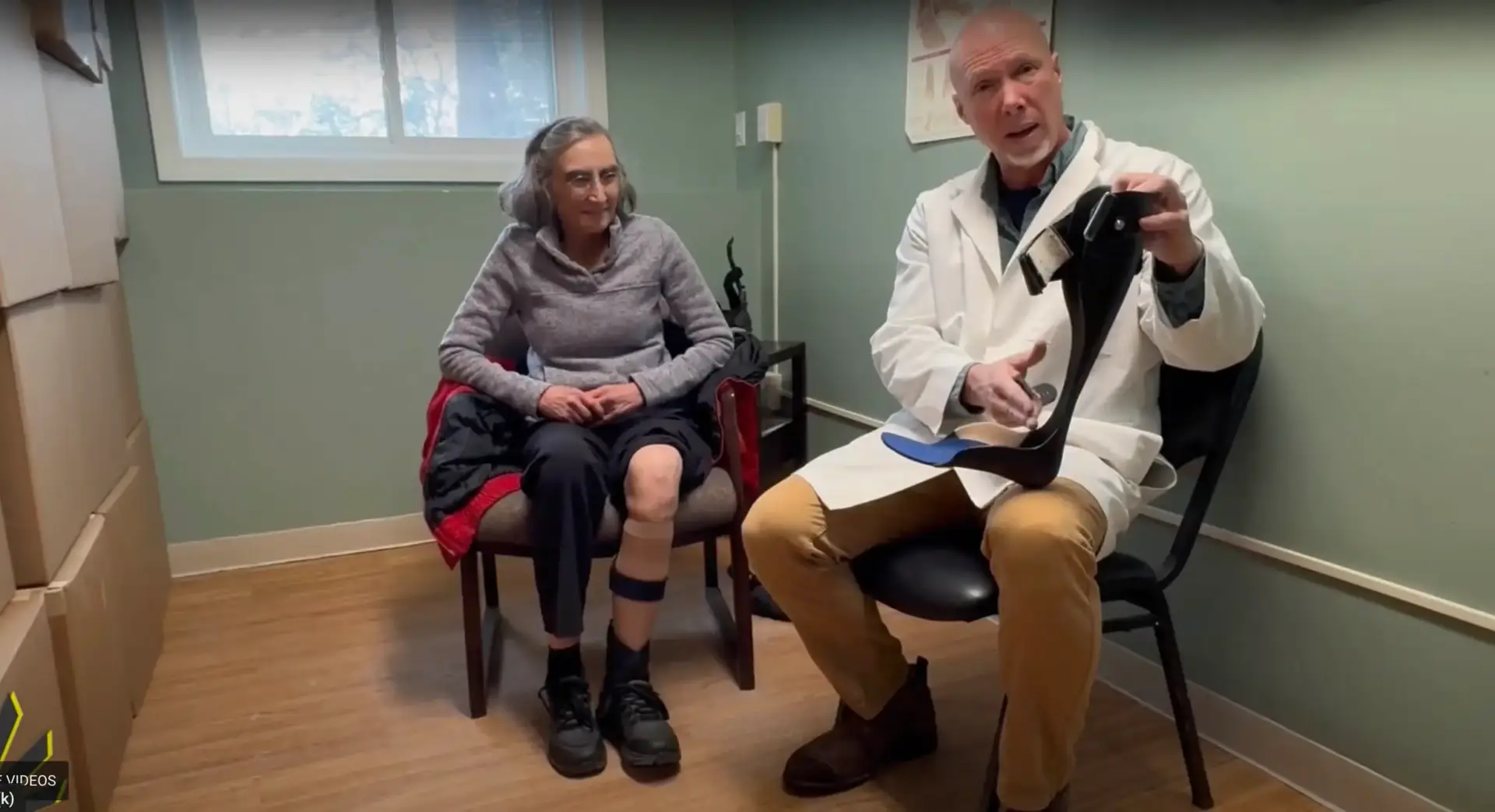Elaine Compares Her Carbon Fiber Brace with Step-Smart Brace for Drop Foot
Hi, it’s Ian, I’m with Elaine. Elaine comes
Video Transcript:
Hi, I’m Ian from Insightful Products. Today, we’re going to talk about the cuffed calf section: the advantages and disadvantages, and why you might choose to have a cuffed calf section for your Step-Smart brace.
First, I’m going to talk about the normal calf section that comes with the Step-Smart so you have some understanding of what to expect. The normal calf section is much smaller. Patients love the way it’s discreet and low. Now, some would say that gives you a higher amount of pressure on the calf, and that’s true, but we find this level is very tolerable for most patients and it’s comfortable after the break-in period.
Now, when you first try the Step-Smart brace, you might find that there’s a little bit of discomfort behind your calf. Just make sure you wear a sock that’s higher than the calf section and understand that it’s going to take a week or so for you to break in and get used to the new pressure distributions that the Step-Smart brace uses. Keep in mind that this part of the leg isn’t meant to take pressure, so you haven’t developed a tolerance for it right off the bat.
It does slide side to side, and it does slide up and down, and that’s on purpose. What that does is it gives you the normal range of motion for your ankle joint, and that’s one of the defining features of the Step-Smart brace and why people choose it over other designs.
However, if you’ve got a really skinny calf or are otherwise very sensitive in the back of your calf, you can order a cuffed calf section by measuring 10 inches up and taking the circumference. Here’s a video showing how to do that. Once you get your cuffed calf section, you can replace it yourself using the screws that attach the tensors to the foot section. Or, if you’re more comfortable, you can just send your existing Step-Smart brace to us and we’ll be happy to install it for you at no charge.
The cuffed calf section is much taller and distributes the pressure over a greater surface area, so it does make it more comfortable. In addition, it wraps around the back and that gives you less mobility in the coronal plane or side-to-side motion. In this next clip, you’ll see how the cuffed calf section is higher and is more secure around the leg, and affects the ankle. We’ll also show you how the normal calf section allows that motion and is more discreet.
Here we have a standard calf section that comes with the Step-Smart brace. This calf section works for the majority of the people using the Step-Smart brace, and it’s only a small percentage in the under 10% range that needs to have a cuffed calf section in order to distribute the pressure on the calf.
The short calf section allows for normal motion in the ankle in the side-to-side direction or in the coronal plane. So, you can see how it slides from side to side on the calf, allowing the patient or person to use their ankle in a normal way throughout the day. Also, you’ll notice that it slides up and down, and that’s to allow plantar flexion. Here, from the side view, you can see that sliding a little better.
The calf section is nearly invisible from the front, and that makes it very cosmetic.
Here’s an example of a cuffed calf section. As you can see, it’s much higher than the normal calf section that comes with the Step-Smart brace, and that will distribute the pressure and make it more comfortable. From the side view, you can see that it wraps around the leg. From the front view, you can tell that wrapping will help to control inversion during the swing phase. That is, this part of the brace can help in conjunction with the I-strap to control unwanted inversion of the forefoot.
Some of you may be aware that I’m the inventor of the Step-Smart brace, but today I’m also the model for the Step-Smart brace. Now I don’t have drop foot, but I do care that you get good results and you’re comfortable with your Step-Smart brace. That’s it for Foot of The Week! We’ll see you next week!
Hi, it’s Ian, I’m with Elaine. Elaine comes

Hi, it’s Ian from Insightful. I’m pleased to introduce you to Gail who came from Connecticut

Hey there, it’s Ian from Insightful. We have Chris here who came from Framingham, MA, and he has flail foot
367 U.S. Route 1, Suite 5-S
Falmouth, ME 04105
(207) 885-0414
faq@insightfulproducts.com

Site by Fisher Green Creative. LLC